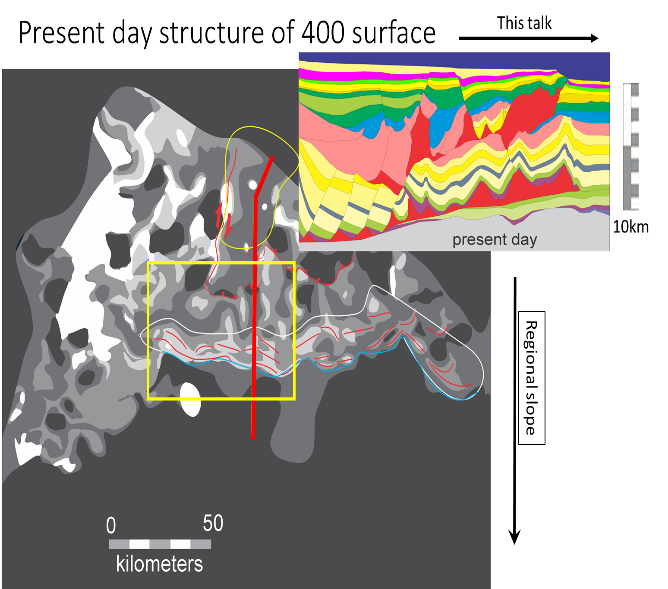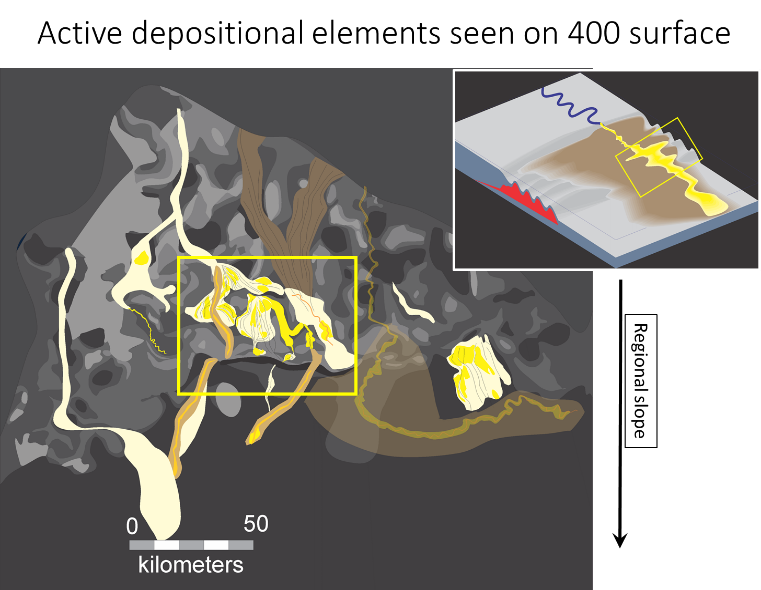Presenter
Gillian Apps, Ph.D
Research Fellow
Jackson School of Geosciences
Bureau of Economic Geology
The University of Texas at Austin
Description
Gillian Apps, Frank Peel, Olly Duffy 1, Naiara Fernandez 2 & Stan Stanbrook 3
Published fill & spill models focus on depositional sequences in a single 2D structural section strike to perceived sediment transport direction. However, in salt provinces and deepwater fold and thrust belts, fill & spill occurs within a strongly 3-dimensional structural topography, and the spill points change through time. This paleotopographic issue, combined with the evolution of the sedimentary deepwater sequence through time, creates a 4-dimensional challenge to predict the vertical and lateral arrangement of facies associations in a single well, in different parts of a single minibasin or across a region; with implications for reservoir quality and connectivity
We illustrate the problem with a Pleistocene-age sequence (50-100m thick), developed in a set of minibasins within a salt-detached foldbelt at the compressional toe of the Sigsbee salt canopy in Northern Gulf of Mexico. Sediment entering the foldbelt is ultimately destined for the continental rise in front of the Sigsbee.
The early sand-rich part of the depositional sequence is limited (in space) to regions where structural topography can develop, and (in time) to the topographic healing phase. As sediment flux increases, and structural topography is overwhelmed, it evolves into an erosional, then aggradational channel complex which breaks across the region, capturing all the drainage. This channel is not spatially coincident with the early sand-rich depositional region.
This evolution happens rapidly in an active fairway with high sediment flux, and therefore the major aggradational channel systems and associated MTCs tend to dominate the Pleistocene stratigraphic record, obscuring, and in places eroding, the earlier stages of sequence development, which commonly contain the best-connected sand-rich reservoirs.


Author's were all research scientists with AGL at the BEG, at time the research was done, with the exception of Stan Stanbrook, but their current locations are as follows:
Gillian Apps and Frank Peel are retired and currently visiting research scientists with AGL.
1 Structural specialist, Gulf of Mexico Exploration, Chevron, Houston
2 Post doctoral research scientist, GFZ, Potsdam, Germany
3 Principal Stratigrapher, Murphy Exploration, Houston
